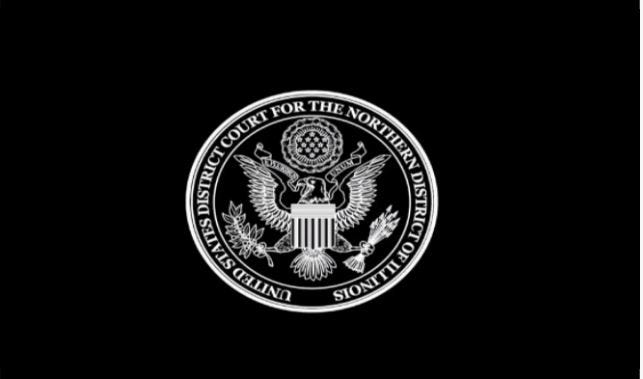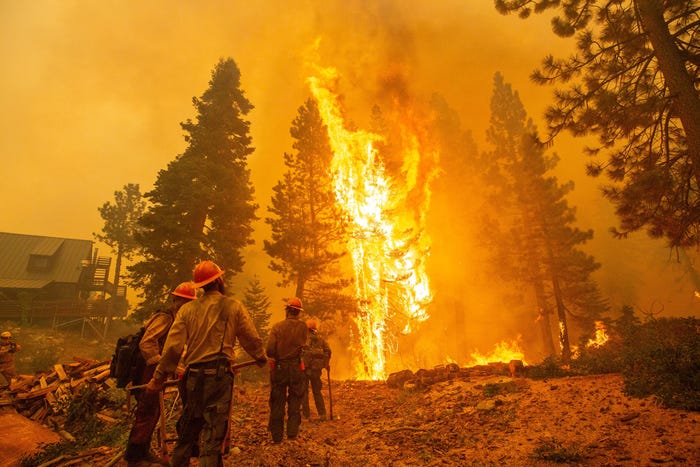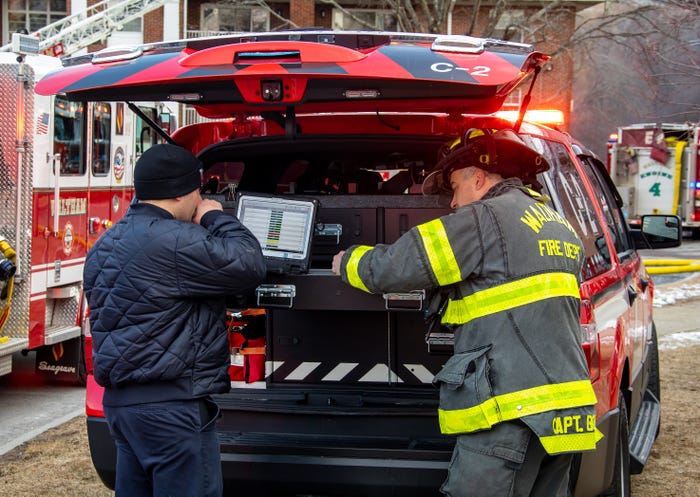World Trade Center amateur radio volunteers bearing up well
New York Amateur Radio Emergency Service and Radio Amateur Civil Emergency Service volunteers generally are in good spirits, but tired, said New York City-Long Island Section Emergency Coordinator Tom Carrubba, KA2D.
September 25, 2001
New York Amateur Radio Emergency Service and Radio Amateur Civil Emergency Service volunteers generally are in good spirits, but tired, said New York City-Long Island Section Emergency Coordinator Tom Carrubba, KA2D.
“The mood is positive,” he said, more than a week into the grim reality of the World Trade Center attack response. “Overall, it’s going very, very well. Everybody’s settling into the routine of the operation.”
Two dozen or more hams per shift are covering communications and logistical support for the American Red Cross as well as supplementing communication for the New York City Office of Emergency Management.
“It’s a great effort every day, 24/7, and it’s expanding as we get more requests,” Carrubba said.
A single, multipurpose ARES/RACES net is being maintained on the 147.000 MHz repeater in Manhattan. New York City District Emergency Coordinator and RACES Radio Officer Charles Hargrove, N2NOV, is serving as the incident commander.
At this point, Carrubba said, the need for volunteers is being largely covered by amateurs from the Greater New York City Area——which includes New York City and Long Island, Eastern New York, Connecticut and Northern New Jersey. Hams have volunteered from all over, however, including at least eight Delaware-Lehigh Amateur Radio Club members from Pennsylvania’s Lehigh Valley.
Hams are deployed to 13 American Red Cross shelters, two OEM sites, several staging areas and Red Cross headquarters, and as net controls. At any given time, as many as a half dozen amateurs are posted just outside the secure perimeter of the so-called “Ground Zero” World Trade Center site, where Carrubba described conditions as “terrible.” Volunteers there have been asked to provide respirators and other protective clothing. Shifts at all locations are 12 hours long.
Carrubba explained that Amateur Radio volunteers are being rotated in and out of areas and duties in an effort to equalize the stress. “The first 30 or 40 hours everybody does ‘the iron man act,’ I call it, because they’re running on adrenaline,” he said. After that, everyone gets some rest and unwinds a little bit. “The people that are going back are fresh,” he said.
Since Sept. 11, more than 350 hams have volunteered in excess of 5,000 work hours.
Carrubba anticipates the Amateur Radio support operations to continue for some time to come, since the normal telecommunications systems remain disrupted or problematic.
“The communications in the shelter are being used like telephones,” he said.
Telephone service is available, but it can take 15 or 20 tries to get a call through. Carrubba said net traffic has been substantial, although there are occasional lulls.
Many more volunteers will be needed before the ARES and RACES operation stands down “Right now our task is a long-term effort, Carrubba said.
“The schedule is being filled in on a day-by-day basis,” he said.
To date, more than 200 individuals have signed up via the World Trade Center Disaster Relief Communications Web site.
Carrubba expects that Amateur Radio assistance might be needed at least another week and possibly longer.
“As long as there’s a need for communications, we will be there,” he said.
In the meantime, REACT International is seeking additional Amateur Radio and licensed GMRS users, primarily to support the Salvation Army’s relief efforts in New York.
“We still need volunteers,” said REACT International Secretary Lee Besing, N5NTG, who added that some shifts on Wednesday went unfilled. “They’re burning out and having to return to their jobs,” he said. REACT is now running 20 volunteers per shift. Volunteers should visit the REACT International Web site or contact Charles Bessels, [email protected].
Pentagon ARES team stands down
The team managed by Virginia Amateur Radio Emergency Service to support the Salvation Army’s disaster relief operation at the Pentagon has stood down. Virginia Section Emergency Coordinator Tom Gregory, N4NW, thanked all who volunteered and turned out to assist following the Sept. 11 terrorist attack.
“With the changes in security, increased shift times and, most of all, the ability of the Salvation Army to [now] manage their support operations via telephone, the need for Amateur Radio has ended,” Gregory said. “The support provided here in Virginia, by the hams in New York–where operations continue–and in Pennsylvania clearly demonstrates the resolve and commitment by so many hams to meet the needs of our fellow Americans at this time of great tragedy.”
The ARES operation——with Tom Harmon, AK1E, as incident commander——provided logistical support between the Salvation Army’s relief and recovery effort on site and the agency’s Arlington headquarters. The Salvation Army has been providing food and refreshments to the crews engaged in the Pentagon investigation and recovery operations. Gregory said many of the more than 100 volunteers who reported for duty between Sept. 11 and Sept. 18 gave up time with their families and their jobs. In a few cases, he said, he even wrote letters to employers requesting that volunteers be allowed time off to work the incident.
“Amateur Radio performed exactly as it was supposed to,” Gregory said. “We responded to the need to provide communications where none were available.”
He said the Virginia ARES organization stands ready to jump in again “at a moment’s notice” if the need arises.
Another amateur team consisting of Mt Vernon Amateur Radio Club and Arlington County Amateur Radio Club members was providing communication and technical support to the American Red Cross relief effort at the Pentagon site. Arlington County ARES Emergency Coordinator Alan Bosch, KO4ALA, said his team was running shifts from 8 a.m. through 1 a.m. each day, and he expected the operation to continue at least through week’s end.
ARRL President Jim Haynie, W5JBP, visited members of the Pentagon ARES team on Monday, Sept. 17. Gregory said he appreciated Haynie’s encouragement at a difficult time. Haynie was accompanied by ARRL First Vice President Joel Harrison, W5ZN, FCC Special Counsel for Amateur Radio Enforcement Riley Hollingsworth and ARRL Virginia Section Manager Carl Clements, W4CAC.
(Source: ARRL Letter)



